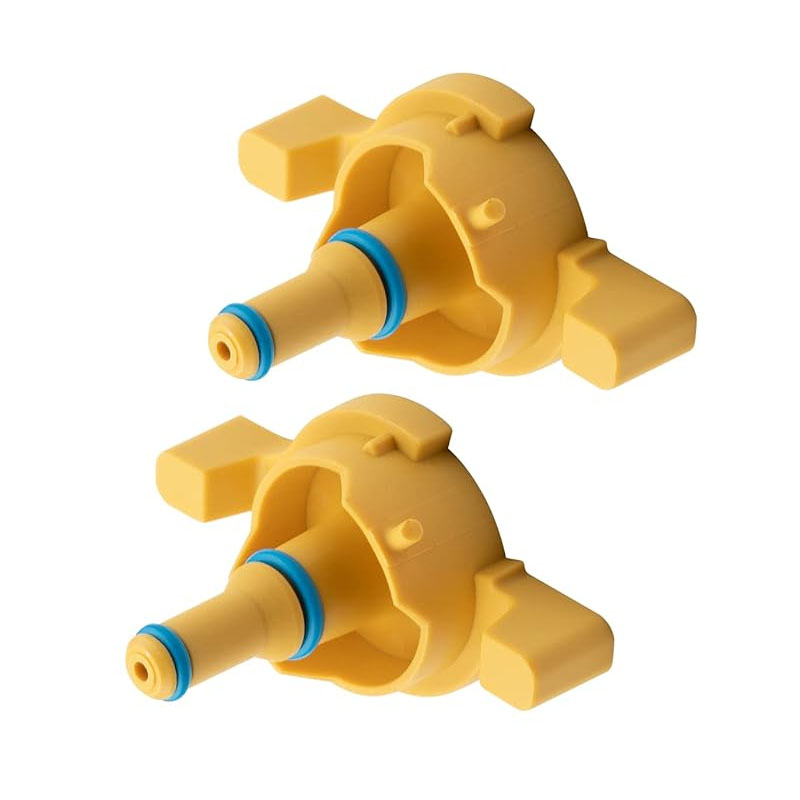Replacing the oil pan gasket
 Be cautious not to damage the mating surfaces Be cautious not to damage the mating surfaces
Be cautious not to damage the mating surfaces Be cautious not to damage the mating surfaces removing oil pan gasket. The old gasket might be stuck, requiring a plastic scraper or a putty knife to remove it. Avoid using metal tools as they can scratch the surfaces, potentially causing leaks in the future.
After the old gasket is completely removed, clean both the oil pan and the engine block thoroughly. Any residual oil or gasket material can interfere with the new gasket's seal. Use a degreaser and a lint-free cloth for this task.
Before reinstalling the oil pan, apply a light coat of high-temperature silicone sealant on the engine block's mating surface. This will enhance the new gasket's seal. Now, align the oil pan and reinstall the bolts, tightening them in a crisscross pattern and in stages to ensure even pressure.
Lastly, refill the engine with fresh oil, matching the manufacturer's recommended viscosity and type. Start the engine and check for any leaks around the oil pan. If everything is in order, you've successfully completed the task of removing and replacing an oil pan gasket.
Remember, regular maintenance like this can significantly prolong your vehicle's life. Though it may seem daunting at first, understanding and executing tasks such as removing an oil pan gasket can save you time and money in the long run. Always consult your car's service manual for specific instructions and precautions tailored to your vehicle. Happy motoring!
removing oil pan gasket. The old gasket might be stuck, requiring a plastic scraper or a putty knife to remove it. Avoid using metal tools as they can scratch the surfaces, potentially causing leaks in the future.
After the old gasket is completely removed, clean both the oil pan and the engine block thoroughly. Any residual oil or gasket material can interfere with the new gasket's seal. Use a degreaser and a lint-free cloth for this task.
Before reinstalling the oil pan, apply a light coat of high-temperature silicone sealant on the engine block's mating surface. This will enhance the new gasket's seal. Now, align the oil pan and reinstall the bolts, tightening them in a crisscross pattern and in stages to ensure even pressure.
Lastly, refill the engine with fresh oil, matching the manufacturer's recommended viscosity and type. Start the engine and check for any leaks around the oil pan. If everything is in order, you've successfully completed the task of removing and replacing an oil pan gasket.
Remember, regular maintenance like this can significantly prolong your vehicle's life. Though it may seem daunting at first, understanding and executing tasks such as removing an oil pan gasket can save you time and money in the long run. Always consult your car's service manual for specific instructions and precautions tailored to your vehicle. Happy motoring! -
The Ultimate Guide to Boat Propeller Bearings and Trailer Wheel Bearings
News Jul.31,2025
-
The Essential Guide to Marine Bearings and Boat Trailer Wheel Bearings
News Jul.31,2025
-
The Complete Guide to Heavy Duty Seals: Protecting Doors and Spaces Efficiently
News Jul.31,2025
-
Essential Guide to Marine Shaft Bearings and Boat Trailer Axle Bearings
News Jul.31,2025
-
Comprehensive Guide to Marine and Trailer Bearings for Safe Boating and Transport
News Jul.31,2025
-
Comprehensive Guide to Automotive Oil Seals: Protecting Your Engine and Shafts
News Jul.31,2025
-
Understanding Automotive Oil Seals: Essential Components for Engine and Shaft Protection
News Jul.30,2025
Products categories















